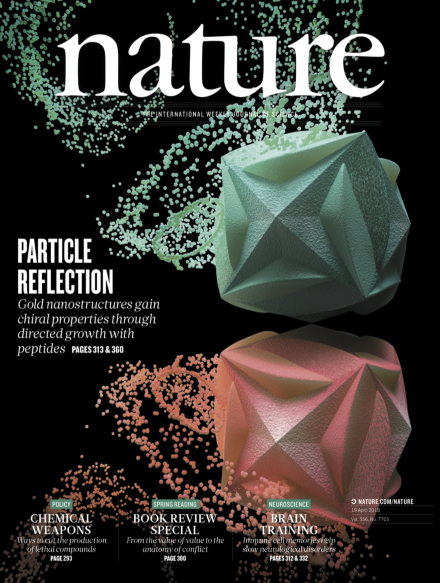Volume 556 Issue 7701, 19 April 2018
This Week
-
Editorial
-
-
World View
-
Research Highlights
-
Seven Days
News in Focus
-
News
-
Features
Comment
-
Comment
-
Books and Arts
-
Correspondence
Careers
-
Columns
-
YouTube your science
Career Guide:
-
-
Q&A
-
Career Briefs
Futures
Research
-
News & Views
-
Articles
-
Letters

